What motivates an amateur astronomer to hunker down over an eyepiece and draw what they see? Have you ever looked at an astronomical sketch and wondered why the artist handled it the way they did? If you are a long-time astronomical sketcher, you probably have a some goals and methods to which you are partial. There are probably as many ways of going about a sketch as there are people who do it. One of the things that’s going to determine how somebody sketches an object is their actual intent for doing the sketch in the first place. Here are a few that come to mind:
Improving your observing
This one intent alone makes sketching an incredibly beneficial process. It’s why I got started, and it’s still a key reason I do it today. The great thing about this one goal is that your sketches don’t need to look gorgeous, your stars can look like boomerangs, your sketch circle can be shaped like a broken egg, and you can have smears all over it and still get the full benefit of becoming a better observer. I’ve got a bunch of earlier drawings that look like this, and I’m not embarrassed about their quality. They fulfilled their purpose. You can see several of them in my Messier gallery. However, using sketching as an observing tool is just one reason why somebody may choose to draw an object; and these other intents are where the variety of sketching styles begin to blossom.
Providing a personal record
I’m pretty sure that most observers who sketch to improve their observing end up filing those drawings away to browse another day. It can be really enjoyable to look back on old observations and relive the moment–to be reminded of what made that observation unique or interesting. Since you are the only one who looks at these records, there is no need to refine them. However, some may decide that they want to work on their technique so that the record evokes the observation more accurately. Here is where a whole spectrum of possibilities open up…but no one else has to know how you render them, unless you dabble in some of these other goals…
Comparing observing details with others
An eyepiece drawing can be a great way to describe an object and discuss the details with others. Since this is a practical consideration, there’s really no need for the drawing to be ‘attractive’. However, putting a bit more care into the craftsmanship of the sketch does help convey the information more accurately to your audience. You may take more care that the stars are round, that brighter stars are bigger, that you carefully describe extended objects or unresolved stars with shading or contour lines.
Conveying the appearance of the eyepiece view
Conveying the distinct attributes of an object begs for attention to detail. However, if you want to try and show how it actually looked to you through the eyepiece, you are presented with a variety of challenges. Do you convey the image in negative or positive format? If you go with the positive view, how do you convey a black sky with white stars? How do you convey that amazing contrast between a very bright star and the fainter stars in which it swims? How do you deal with the grainy mist of a globular cluster? What about any color you see? Can you convey a very faint object in a way that your audience can appreciate how difficult it was and still actually see it?
Anyone who wants to convey their observation this way is going to have to make choices about these and other questions. Some choices will be based on a personal preference, others will be decided by what that person feels capable of doing. Some may feel that since it isn’t possible to truly evoke the eyepiece view, there’s no point in trying to go there. That’s a respectable approach–but it’s not the only one. One thing is for sure, if you choose to share this view with others, some people are going to like it, and some people aren’t. Some might even downright disapprove of the choices you’ve made. There’s really nothing you can do about that. If somebody’s opinion can help you improve, great! If it’s not helpful, or simply has no application to your style of illustration, you just have to do your best to let it roll off.
Artistic inspiration and expression
I think for many of us, viewing pieces of the universe through the eyepiece, or an assisted video device, or just the naked eye, is a moving experience. So, it makes sense to me that the artistically inclined would at times try to express those experiences in a way that goes beyond a technical drawing. I think an encyclopedia’s worth of information would be needed to cover all the angles and interpretations of a topic like this. I will say that I think there is a continuum that runs from the driest technical drawings all the way to the most embellished works of art. At some point, to a majority of people, the image will no longer be considered an observational drawing or illustration, but there is no way that I would feel qualified to drop a boundary in the ‘correct’ spot somewhere in the muddy part of that spectrum.
Bill Ferris brought up the topic about Realism and Impressionism over three years ago. I think it’s a great point to make. Even if someone tries to be extremely technical with a drawing, there are still liberties that are taken–such as making bright stars bolder, or trying to shade an extended object whose range of brightness in the eyepiece has no hope of being portrayed the same way on a sheet of paper.
Other intents?
I’m sure there are other reasons people spend time sketching what they see out there. Do you have any that I haven’t attempted to cover above?
Sketching Methods
The methods you use to produce a sketch are going to depend on your personal tastes and your goals, and if you’re showing it to others: who your audience is.
Some key methods I’ve observed are:
- Generating the complete hand drawn sketch in the field with no post-edits
- Producing a rough sketch in the field and re-drawing a refined version later
- Creating a hand drawn sketch, scanning it, and then using digital tools to clean it up, add color and so on.
- Creating a rough sketch in the field, and then re-creating it completely with digital tools later
- Using video assisted viewing to create a sketch in any of those ways
- Sketching onto a pre-printed star field so the observer can concentrate on an extended object rather than the star field
Some observers point out that an un-edited, un-refined field drawing is the only one that could truly be called a ‘sketch’. Sometimes I like hard labels, and sometimes I don’t. I’m somewhat torn by this one. I think there’s a good argument to be made that an unmodified drawing created in the field is what a ‘sketch’ really is. Cleaned up, redrawn observations might be better called ‘illustrations’. The problem is that in amateur astronomy, the term illustration (in my mind) carries the baggage of sounding ‘conceptual’ in nature and might lead to the impression that the image is not the result of a specific, detailed observation. That’s a tough one.
Regarding the use of a pre-printed star field, I know I’ve benefited from this technique on several occasions when sketching comets. When a comet is a twilight-scraper, it can really aid the amount of time you spend actually observing the comet before it disappears, rather than plotting field stars. Others have found the technique useful for any number of objects, when time under a dark sky is rare and precious. I think it’s great. Others wouldn’t touch that method with a ten foot pole. Whenever I prepare a sketch this way, I make sure to note that the star field comes from another source.
Is it appropriate to call one who sketches an ‘Artist’?
As far as the occasional flinching that occurs when the word ‘artist’ is used, I think a lot boils down to how someone defines ‘art’, ‘artist’, or ‘artistic’.
A couple reason’s come to mind that an astronomical sketcher might not care for that label. One is that many people (in my experience) associate ‘artist’ or ‘artistic’ with something that is almost painfully out of their league, and using those terms can shut them down before they give it a try. The other reason is that I think many would rather their drawings be considered on practical merit rather than artistic. I think it all comes down to how people define ‘artist’ and ‘artistic’, and some of those definitions, bring up things they don’t like. That’s a very difficult barrier to negotiate, particularly if you have a broader view of the words than someone else does. Personally, I try to avoid that by using other terms like ‘technique’ and ‘craftsmanship’ and the slightly edgy ‘aesthetic’ (when describing the beauty perceived through the eyepiece and the efforts an observer might make to recreate that).
However, although I typically avoid actually saying it, I do believe their is an ‘art’ to sketching just as I think there’s an art to having a conversation or drinking a cold beverage without the ice sloshing all over my face*. But that’s because I’m referring to a usage I’ve grown up with:
art (n) – 1. skill acquired by experience, study, or observation (the art of making friends). 2a. a branch of learning. 3. an occupation requiring knowledge or skill (the art of organ building).
The word ‘skill’ might even raise some alarms, but there’s even a tiny bit of skill involved in picking up a pencil or pen and not stabbing the other hand with it. I think that many amateur astronomers who enjoy sketching end up refining their skill by experience, study and observation at some level.
Still, when the word art is used, I think that many tend to think of this definition
– produced as an artistic effort or for decorative purposes (an art film) (art dolls) (art music).
That’s the baggage I believe many astronomical sketchers react to when ‘art’ is used to describe their work. So personally, I try to be careful with the term. 🙂
*Not saying I’ve mastered any of those.
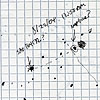
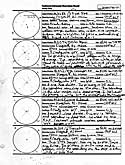
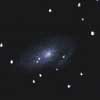
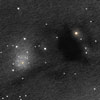
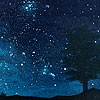
Hi Jeremy;
I have contacted you before asking to use your drawing in my presentations for the Stockton Astronomical Society. They are awesome and reflect what things look like in the eyepiece, and what to expect, rather than Hubble images. I am presenting Summer Skies Workshop at the June SAS meeting on June 9th. May I please use your drawings again?
Thanks,
Bald